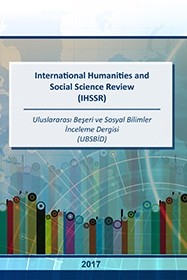SOCIOLINGUISTICS AND ITS CONTRIBUTION TO ENGLISH SPEAKING SKILLS
Sociolinguistics is a broad and integrated field of study that examines the perspectives of a particular society, together with its culture, how the target language is used, and the consequences of language on that society. The relationship between Foreign Language Learning (FLT) and sociolinguistics is significant in various ways. Sociolinguistics is highly connected to second language acquisition (SLA) to the extent that it intensely highlights an understanding of the process of language acquisition. This can be done by providing a broader and more comprehensive aspect of language, either at a verbal or non-verbal level (Rogen, 2002). This is because what a native speaker says may be above the actual meaning.Thus, as well as what is uttered, knowing with whom, where, when, and how to talk (discourse) is a key conceptual issue for a learner to pick out the hidden meaning behind (Kramsch, 1991). This leads the learner to decipher the implications—a more nuanced level of understanding of what is said. Sociolinguistics also highlights another key concept, ‘culture’ where a language comes alive. So, this discipline offers learners a high degree of awareness of "sociolinguistic competence", through which a foreign language learner gets exposed while acquiring values and beliefs in a particular society. Additionally, sociolinguistics facilitates contextual learning, which enables them to efficiently communicate in line with given situations and at an appropriate level of language. This is precisely what Speech Act Theory, which is profoundly founded on communicative competence, including such daily life uses as inviting, ordering, congratulating, and so on, suggests. This study highlights the notion that sociolinguistics enables foreign language learners to acquire a target language realistically and functionally, not only at the word and sentence levels but also at contextual levels. Hence, sociolinguistics allows learners to interact with native speakers through oral and written communication with more confidence.
Anahtar Kelimeler:
Sociolinguistics, Foreign Language Learning, English Learning
___
- Bialystok, E. & Hakuta, K. (1999). Confounded Age: Linguistic and Cognitive Factors in Age Differences for Second Language Acquisition. In a D. Birdsong (Ed.), Second Language Acquisition and the Critical Period Hypothesis (pp. 161-181). London: Lawrence Erlbaum Associates, Publishers
- Brown, P., & Levinson, S. (1987). Politeness: Some universals in language use. Cambridge. Cambridge University Press.
- Canale, M. & Swain, M. (1980). Theoretical bases of communicative approaches to second language teaching and testing. Applied Linguistics. (1,1), 1-47.
- Dharma Raja, B. W., & Selvi, K. (2011). Causes of Problems in Learning English as A Second Language as Perceived by Higher Secondary Students. I-Manager’s Journal on English Language Teaching, 1(4), 40–45. https://doi.org/10.26634/jelt.1.4.1604
- Dochy, P. (2009). Edumetric quality of new modes of assessment: Some issues and prospects. In Joughin G. (Ed.), Assessment, Learning and Judgment in Higher Education (pp. 85-115). Wollongong, Australia. Springer.
- Eugéne D. & Deforges, S. & Vibert, N., and Vidal P.P. (2009). "Vestibular Critical Period, Maturation of Central Vestibular Neurons, and Locomotor Control". Basic and Clinical Aspects of Vertigo and Dizziness Annals of the New York Academy of Sciences, 1164, 180–187
- Flintan F. & Tedla S., (2010). Natural Resource Management, Kampala, Uganda. Fountain Publishers.
- Getie A. S. & Popescu, M. (2020). Factors affecting the attitudes of students towards learning English as a foreign language, Cogent Education, 7, 1, DOI: 10.1080/2331186X.2020.1738184
- Grabe, W., (1988). Reassessing the term interactive. In Carrell, P.L., Devine, J. and Eskey, D.E. (eds.). Interactive approaches to second language reading. CUP
- Gumperz, J. (2001) Interactional sociolinguistics: a personal perspective. In D.Schiffrin, D. Tannen & H. E. Hamilton (eds.), The handbook of discourse analysis (pp. 215–28). Oxford, Blackwell.
- Johnson, J. S., & Newport, E. L. (1989). Critical period effects in language learning: The influence of maturational state on the acquisition of English as a second language. Cognitive Psychology, 21, 60-99.
- Murakami, M. (2011). A Study of Compensation for Face-Threatening Acts in Service Encounters in Japan and the United States (Master’s Thesis). Portland State University.
- Oyama, S. (1976). A sensitive period for the acquisition of a non-native phonological system. Journal of Psycholinguistic Research, 5, 261- 285.
- Pannenter, L. (2003), Intercultural Competence, Council of Europe, Strasbourg
- Patkowski, M. (1980). The sensitive period for the acquisition of syntax in a second language. Language Learning, 30, 449-472
- Ruddell, R. & Ruddell, M. (1998). Language Acquisition and Literacy Processes. In Ruddell, R. B., Ruddell, M. R., Singer, H. (Ed.). Theoretical models and processes of reading, 4th ed. (pp.83-103). Newark, DE: International Reading Association.
- Sabboor Hussain, M., Salam, A., & Farid, A. (2020). Students’ Motivation in English Language Learning (ELL): An Exploratory Study of Motivation-al Factors for EFL and ESL Adult Learners. International Journal of Applied Linguistics and English Literature, 9(4), 15. https://doi.org/10.7575/aiac.ijalel.v.9n.4p.15
- Singleton, D. (2005). The critical period hypothesis: A coat of many colours. International Review of Applied Linguistics, 43, 269-286.
- Song, M. (2011), Effects of background context and signaling on comprehension recall and cognitive load: The perspective of cognitive load theory. (Unpublished doctoral dissertation), University of Nebraska, Lincoln, Nebraska.
- Thomas, J. (1995). Meaning in interaction. London, Longman.
- Trappes-Lomax, H. (2004). Discourse analysis. In Alan Davies and Catherine Elder (Ed.) The handbook of applied linguistics. UK: Blackwell Publishing Ltd.
- Başlangıç: 2017
- Yayıncı: Derya SEMİZ ÇELİK
Sayıdaki Diğer Makaleler
SOCIOLINGUISTICS AND ITS CONTRIBUTION TO ENGLISH SPEAKING SKILLS
YUNANİSTAN’DA HÂLÂ AYAKTA BİR OSMANLI: NARDA (ARTA) SAAT KULESİ
Ercan ALTINSOY, Hasan Hüseyin UÇAR
Açık Hava Rekreasyonel Aktivitelerinin Kırsal Turizme Etkisi
Nihan GARİPAĞAOĞLU UĞUR, Orhan AKOVA
Perakende Şirketlerinin Mali Performansının Değerlendirilmesi
Nuray ERGÜL, Göktürk Nuri KONDAK
